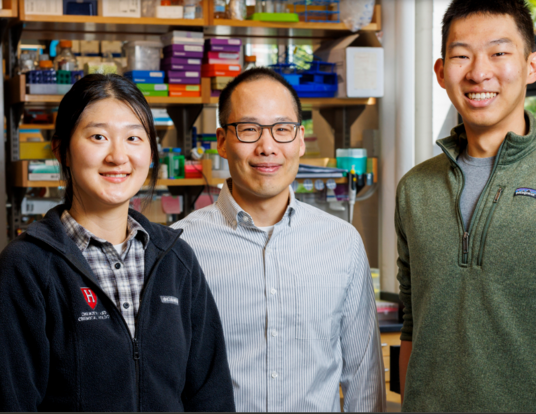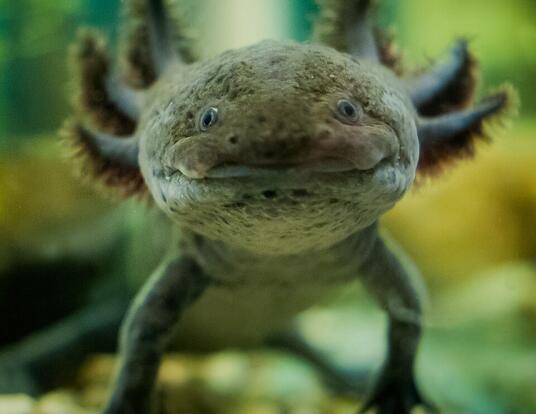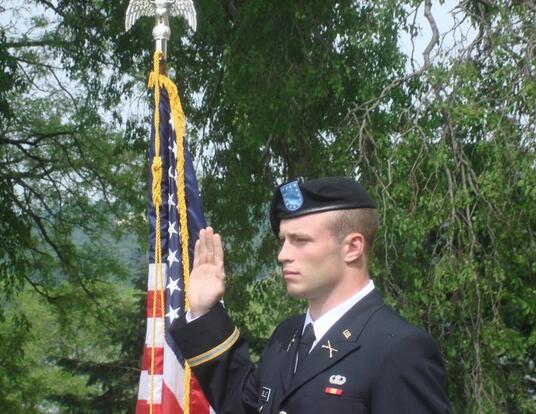Test Tube in a Drop
Robinson Tom, PhD student
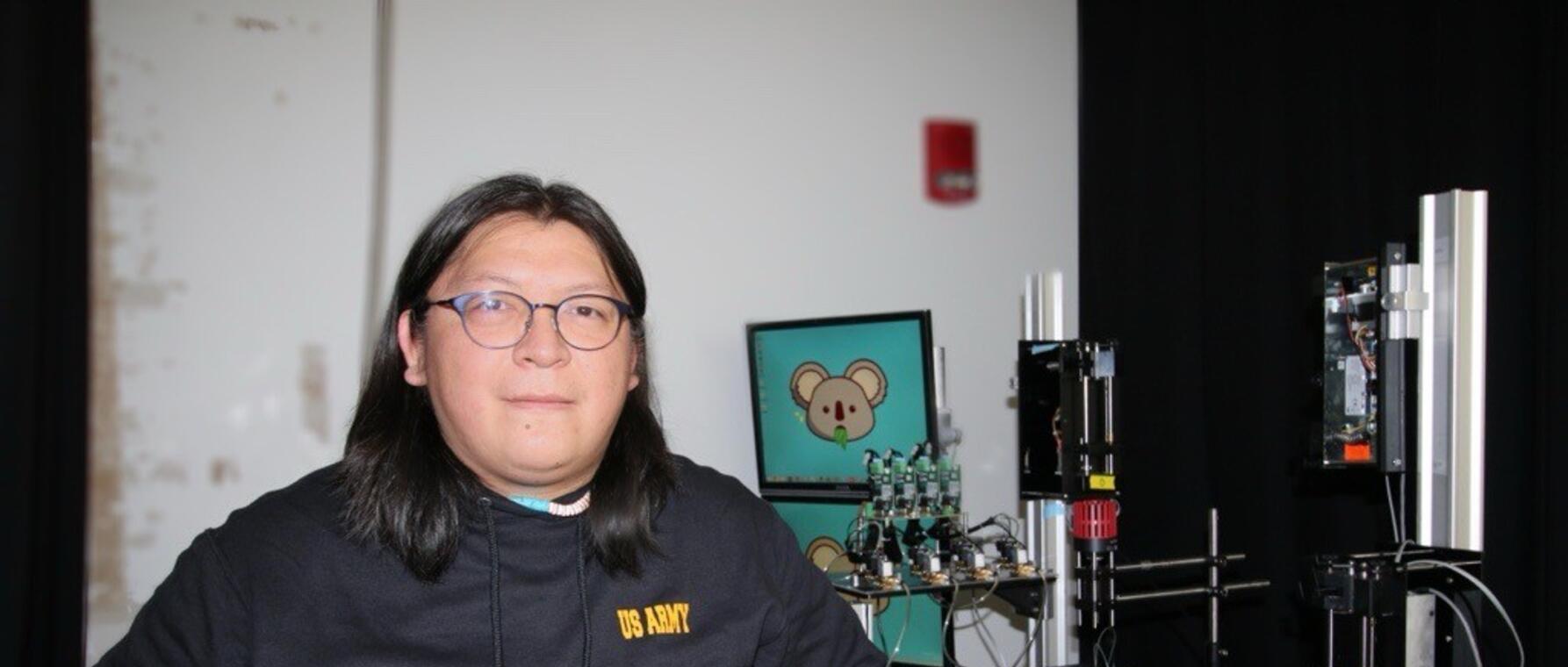
Robinson Tom is a PhD candidate at the Harvard Kenneth C. Griffin Graduate School of Arts and Sciences (Harvard Griffin GSAS) who studies bioengineering at the John A. Paulson School of Engineering and Applied Sciences. He discusses his work on droplet microfluidics, how he went from the military to materials research, and his aspirations to give back to his tribal community, the Navajo Nation.
Selecting Samples
I work with droplet microfluidics, or tiny droplets using water and oil as miniature test tubes. The droplet itself is water and surrounded by oil. Because oil and water don’t mix well, you can put biological or other samples of interest inside the droplets. It’s like doing a bunch of test tube experiments at the same time.
We can easily make millions of droplets using a microfluidic chip designed with channels that allow us to flow oil and water and manipulate the rate of each by increasing the pressure in its channel with a syringe or air pressure pump. With careful parameter adjustment and the geometry of the channels, we can adjust the size of the droplets to make them bigger or smaller.
Right now, I’m working on a project that focuses on how we can improve the way we enrich biological samples using droplet microfluidics. Often, companies or research groups will have an interest in one particular enzyme, protein, or subcell type, and they need to separate that substance from all the other things. An example would be to separate active immune cells from inactive immune cells.
Normally we get a fluorescent “reporter” to attach themselves to the parts that we need and use a laser to identify those parts. A fluorescent reporter is a molecule that can be excited by a laser and can be designed to attach to part of the sample of interest. We can obtain a signal from the excitation when the sample interacts with the laser and then use this signal to selectively deflect the droplet into a collection channel. For example, we can label immune cells of interest with a reporter that will make the droplet fluorescent only if it has a unique sample of interest. This can happen because we design a reporter that fluoresces if an immune cell secretes a specific cytokine.
This is the most popular way to identify samples in droplets, but it’s a complicated and time-consuming process. Some of the droplets contain the sample of interest attached to the fluorescent reporter but there may be other droplets that don’t. Rather than deflecting the droplet to move into a collection channel, my approach is to have a separate channel that selectively injects hydrogel reagents into the droplet. At the end of droplet collection and with some time, I will have a mix of droplet populations that are liquid and solid gels. The solid gel in droplets will have the sample of interest and I can then break the emulsion to obtain just the gels for enrichment.
This project lowers the cost of these technologies and therefore allows more people to access them. What excites me about this is the potential applications of automation and access for low-resourced academic institutions, which otherwise might have needed to pay an expert to do the tedious labor of identifying and separating droplets. With this method, anyone can selectively inject into droplets to create hydrogels and walk away with what they need.
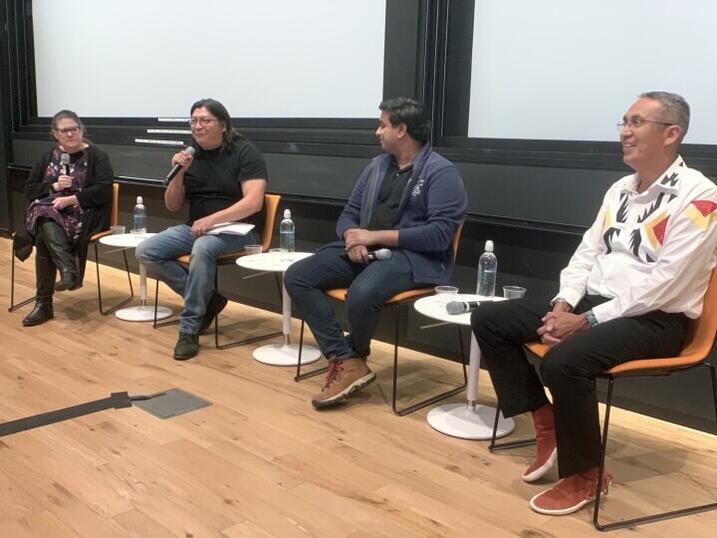
Airwaves to Academia
I joined the military right after high school, and part of my job was detecting radio transmissions using antennas to monitor communication and keep our troops safe. I noticed that when I placed antennas in certain locations, the radio waves were blocked by obstacles, so I started looking into the science of how radio waves travel. It sparked my interest in academia, and after I left the military I attended my local tribal college, Navajo Technical University (NTU).
Growing up on the reservation, I was always located close to the university; my mother worked there and had earned a certificate, but I didn’t know many people who had gotten a four-year degree. I heard there might be better research opportunities for me at a tribal college than at a large public university, so I enrolled at NTU as an environmental science major.
I came in as an environmental science student but found myself getting more and more drawn to biology. At the time, the biology program at NTU was just getting off the ground. I became the first student and the first to graduate from the program. Throughout my time at NTU, I participated in research and internship opportunities that took me to different reservations to meet the people there. We also had some representatives from Harvard come out to NTU and talk about building a relationship between our institutions. That’s how I met my current academic advisor, David Weitz.
Coming to an Ivy League institution like Harvard was quite daunting at first, particularly as someone from a low-resource area that didn’t have a great education system. I do feel a sense of pride in my background, and while it’s been an up-and-down climb for me here at Harvard, I believe my work will pay off, and I’m excited about that.
Conversations with Strangers
Being around Harvard, I often end up talking about academia and science outside the labs. I’ll meet random people in coffee shops and we’ll just end up talking about science. Back home on the “rez,” we don’t have these kinds of moments; it’s hard for me to have conversations about science.
Now that I’m pursuing my PhD in science, I want to go back to the rez and encourage people to do the same. As I’ve matured as a student, I’ve seen all the possibilities for myself—for instance, I’ve seen people launch biotech start-ups—and now I think, “What’s stopping me as a rez kid from doing the same?” In the back of my mind, I am always thinking about the Navajo Nation and the Navajo economy, and how I can help uplift both. It grounds me to think about what the future could be if we focused on academics, and how perhaps one day I’ll be able to walk into a coffee shop on the rez and have a conversation with a stranger about science.
Get the Latest Updates
Join Our Newsletter
Subscribe to Colloquy Podcast
Simplecast


